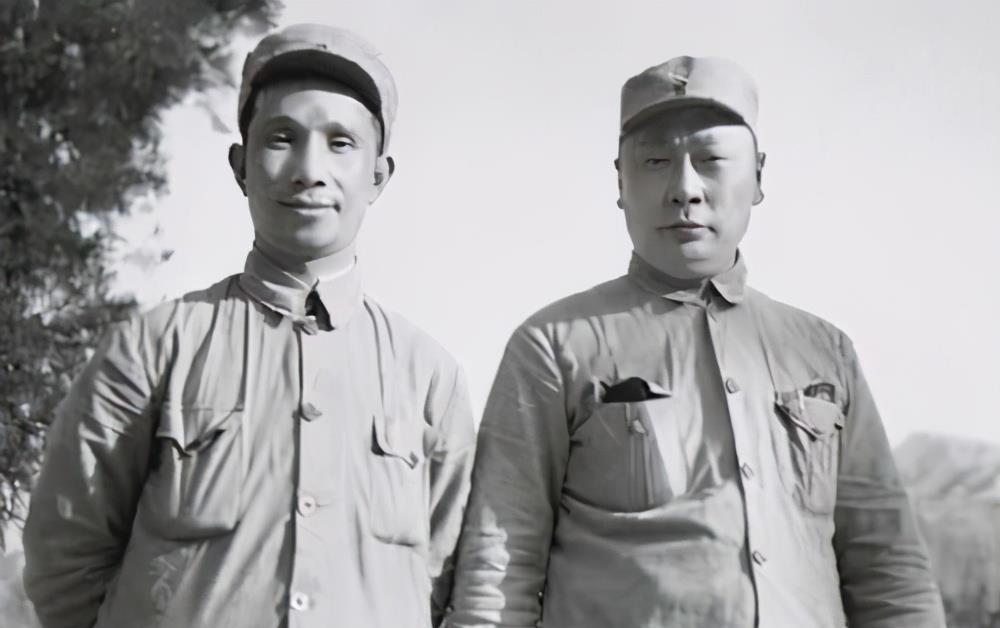Beginning on November 6, 1948, the Plaster Field Army and the East China Field Army, with a total of 600,000 troops and 800,000 Kuomintang troops, launched a large-scale strategic decisive battle in the Guangdong area from Haizhou in the east, Shangqiu in the west, Lincheng in the north, and to the Huai River in the south, which was also known as the Battle of Huaihai. In this battle, both sides threw themselves into their own homes and fought to the death.

The Battle of Huaihai was important to both sides, and the Kuomintang army used all the elite forces of the time, and the Fifth Army and the 18th Army, one of the five main forces, also participated in the battle. In order to win this war, Rao Shushi, secretary of the Northeast Bureau and political commissar of the East China Military Region, and Liu Ruilong, deputy chief of staff of Huaye and commander of the Logistics Command, were personally responsible for logistics work, mobilizing a total of 5.43 million civilian workers from Jiangsu, Shandong, Anhui, Henan and other places, including 220,000 standing migrant workers, 1.3 million second-line migrant workers, and 3.91 million temporary migrant workers in the rear. It raised 960 million catties of grain, 767,000 heads of livestock, 8,539 ships, and 206,000 stretchers.
At the height of the Huaihai Campaign, Huaye's special forces column fired 30,000 shells at the Kuomintang positions every day, and even the Nationalist troops armed with American weapons were beaten to the point where huaye got these shells?
First of all, thanks to the support of Dalian Jianxin Company, many people may not have heard of this company, but this is a very important arsenal. After the victory of the War of Resistance Against Japanese Aggression, when the Liaodong Peninsula was controlled by the Soviet army, there was still heavy industry and a large number of technicians left behind by the Japanese, so the East China Bureau used the gold accumulated in Shandong for many years to build this arsenal, and the Northeast Bureau also contributed some funds to the shares. Dalian Jianxin Company is the first large-scale military-industrial joint enterprise of the People's Liberation Army, and the weapons and ammunition produced mainly support the Northeast Field Army and the East China Field Army.
Dalian's status was relatively special, it was controlled by the Soviet army at that time, so the Kuomintang army knew that this place was an important military base of the People's Liberation Army, but did not dare to bomb it. Dalian Jianxin Company began to build a factory in May 1947, in less than three years of actual production, the production of more than 500,000 shells, 5,000 tons of smokeless gunpowder, 800,000 shell fuzes, more than 1,200 mortars, made a significant contribution to the Liberation War.
In addition to the support of Dalian Jianxin Company, Huaye's most abundant source of shells was captured. In the Battle of Lunan in January 1947, Huaye captured 24 American tanks, more than 200 artillery pieces, and 473 trucks, on the basis of which a special forces column was established, with Chen Ruiting as the commander.
Later, according to the recollection of Chen Ruiting, a special forces column in Huaye, most of the howitzer shells captured by Huaye in the battles of Luoyang, Kaifeng, Weixian and Yanzhou in 1948 were used in the Jinan Campaign. The shells captured in the Battle of Jinan were used to attack Huang Baitao's corps in the first phase of the Huaihai Campaign. When Du Fled Xuzhou, he did not have time to destroy more than 100,000 howitzer shells in the city, which were later used to attack Du Yuming's corps.